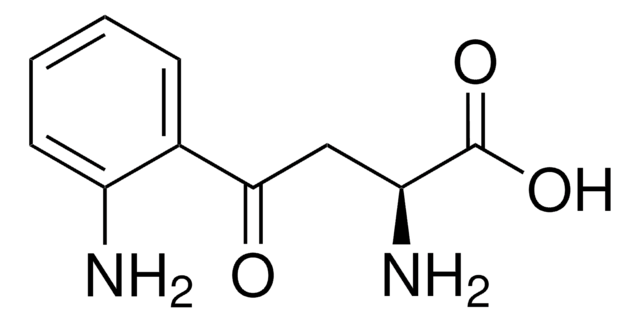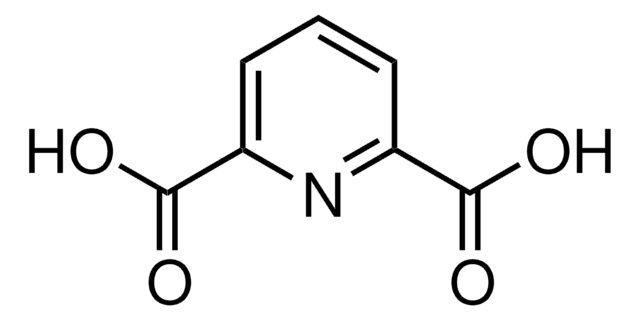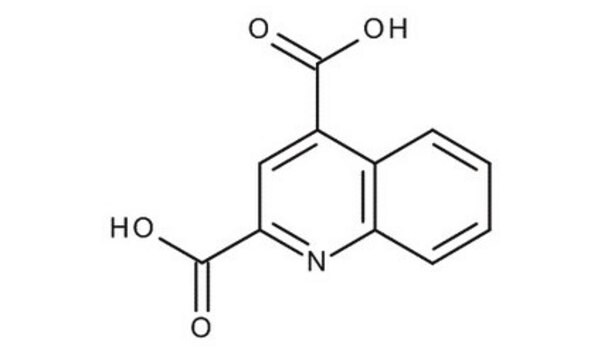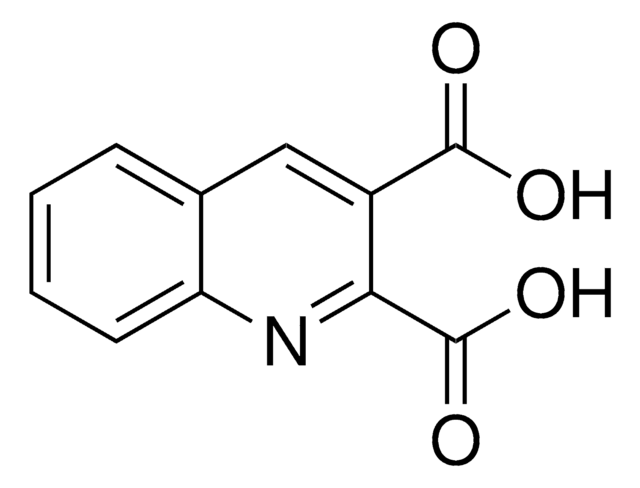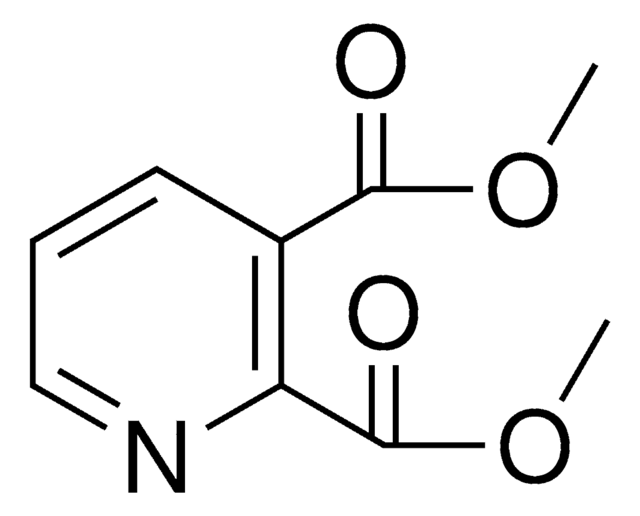P63204
2,3-Pyridinedicarboxylic acid
99%
Synonym(s):
Quinolinic acid
Sign Into View Organizational & Contract Pricing
All Photos(3)
About This Item
Empirical Formula (Hill Notation):
C7H5NO4
CAS Number:
Molecular Weight:
167.12
Beilstein:
137110
EC Number:
MDL number:
UNSPSC Code:
12352100
PubChem Substance ID:
NACRES:
NA.22
Recommended Products
Quality Level
Assay
99%
form
powder
mp
188-190 °C (dec.) (lit.)
SMILES string
OC(=O)c1cccnc1C(O)=O
InChI
1S/C7H5NO4/c9-6(10)4-2-1-3-8-5(4)7(11)12/h1-3H,(H,9,10)(H,11,12)
InChI key
GJAWHXHKYYXBSV-UHFFFAOYSA-N
Gene Information
rat ... Gria1(50592) , Grin2a(24409)
Looking for similar products? Visit Product Comparison Guide
Related Categories
Application
Inhibits glucose synthesis.
Signal Word
Warning
Hazard Statements
Precautionary Statements
Hazard Classifications
Eye Irrit. 2 - STOT SE 3
Target Organs
Respiratory system
Storage Class Code
11 - Combustible Solids
WGK
WGK 3
Personal Protective Equipment
dust mask type N95 (US), Eyeshields, Gloves
Choose from one of the most recent versions:
Already Own This Product?
Find documentation for the products that you have recently purchased in the Document Library.
Customers Also Viewed
L Garcia-Salguero et al.
Archives internationales de physiologie, de biochimie et de biophysique, 99(3), 237-242 (1991-06-01)
The in vitro and in vivo effects of several different inhibitors of carbohydrate metabolism have been studied. The in vitro addition of 5-methoxyindole-2-carboxylic acid (MICA), pent-4-enoic acid, and quinolinic acid to the perfusion medium significantly inhibited liver gluconeogenesis in 48-hour-starved
Dorit Cohen-Carmon et al.
Molecular neurobiology, 57(3), 1768-1777 (2019-12-14)
Huntington's disease (HD) is a neurodegenerative late-onset genetic disorder caused by CAG expansions in the coding region of the Huntingtin (HTT) gene, resulting in a poly-glutamine (polyQ) expanded HTT protein. Considerable efforts have been devoted for studying HD and other
Valéry Combes et al.
Trends in parasitology, 28(8), 311-319 (2012-06-26)
Homeostasis implies constant operational defence mechanisms, against both external and internal threats. Infectious agents are prominent among such threats. During infection, the host elicits the release of a vast array of molecules and numerous cell-cell interactions are triggered. These pleiomorphic
Gilles J Guillemin
The FEBS journal, 279(8), 1356-1365 (2012-01-18)
Over the last two decades, evidence for the involvement of quinolinic acid (QUIN) in neuroinflammatory diseases has been exponentially increasing. Within the brain, QUIN is produced and released by infiltrating macrophages and activated microglia, the very cells that are prominent
Gilles J Guillemin et al.
Neuro-degenerative diseases, 2(3-4), 166-176 (2006-08-16)
The kynurenine pathway (KP) is a major route of L-tryptophan catabolism leading to production of several neurobiologically active molecules. Among them is the excitotoxin quinolinic acid (QUIN) that is known to be involved in the pathogenesis of several major inflammatory
Our team of scientists has experience in all areas of research including Life Science, Material Science, Chemical Synthesis, Chromatography, Analytical and many others.
Contact Technical Service

